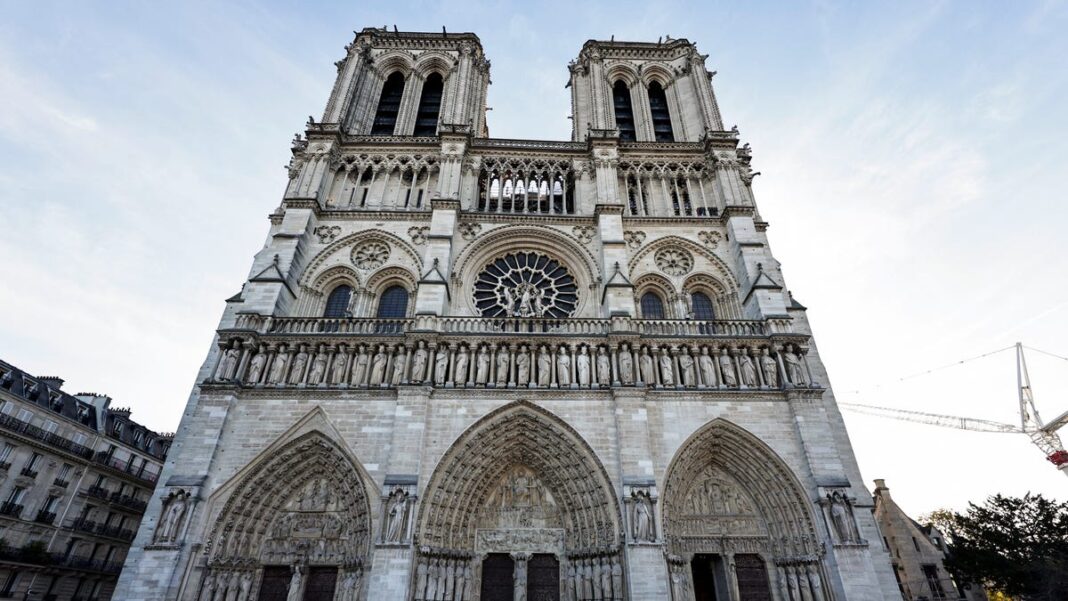First look at the restored Notre-Dame cathedral in Paris five years post-fire
On Friday, French President Emmanuel Macron offered a first look at the restored Notre-Dame cathedral in Paris, showcasing its revival five years after it was nearly destroyed by a devastating fire.
This historic 12th-century cathedral is one of the most renowned tourist spots in the world. It was undergoing significant renovations in 2019 when a fire, believed to be accidental, engulfed the ancient building.
While Notre-Dame will not welcome visitors until the weekend of December 7-8, specific details regarding its restoration have been closely guarded. However, Macron did lead a televised tour in light of the cathedral’s upcoming reopening.
Here’s what you should know about Notre-Dame.
Notre-Dame: A Brief History
The construction of this iconic cathedral began in 1163 under the direction of Maurice de Sully, the bishop of Paris. He aimed to rebuild a site previously hosting a Roman church and a pagan temple. The cathedral took over a century to complete. By then, Paris was emerging as a significant political, economic, and intellectual hub in Europe, and de Sully envisioned Notre-Dame reflecting that status.
What Makes Notre-Dame Famous?
Before the fire, Notre-Dame was celebrated as an architectural marvel. Its design featured intricate symbolic carvings, vibrant stained glass windows, remarkable artworks, and iconic gargoyles. The towers soared over 220 feet, and the cathedral stretched more than 400 feet long, covering nearly 52,000 square feet. It houses several significant relics, including the Crown of Thorns, which many believe was placed on Jesus Christ’s head during his crucifixion.
The cathedral became further immortalized by Victor Hugo’s novel “The Hunchback of Notre Dame,” published in 1831. The story follows Quasimodo, the cathedral’s bell-ringer, and Esmeralda, a sympathetic street dancer. The novel has inspired numerous adaptations, including a beloved Disney animated version released in 1996. The gothic architecture of Notre-Dame has also been celebrated in art forms such as paintings, sketches, and photography.
What Sparked the Fire?
Following an extensive investigation, officials ruled out foul play, concluding the fire likely resulted from an accident, possibly an electrical malfunction or a smoldering cigarette discarded by a worker.
Events During the Fire
Firefighters worked tirelessly for over 15 hours to combat the flames that severely threatened the cathedral. The fire caused the spire to collapse and spread to one of the cathedral’s towers. Luckily, firefighters managed to prevent the blaze from reaching the northern belfry. Numerous valuable sculptures and artifacts were saved, although some did suffer damage from water used to extinguish the flames.
Insights on the Restoration Effort
The restoration project saw around 2,000 skilled workers, including stonemasons, carpenters, sculptors, gilders, roofers, foundry workers, art specialists, and engineers, contributing to the effort which is anticipated to cost close to $800 million. Additionally, artisans worked to restore 8,000 pipes in Notre-Dame’s grand organ.
“We will rebuild Notre-Dame because that’s what the French people expect,” Macron promised in 2019 while visiting the fire site. “Because that’s what our history deserves. Because that’s our true destiny.”
Images and videos hint at the restoration of the cathedral’s once-dingy cream-colored limestone walls, now appearing much brighter and inviting. Macron stated in his address on Friday that when Notre-Dame reopens, it will send a “shock of hope” to all.

